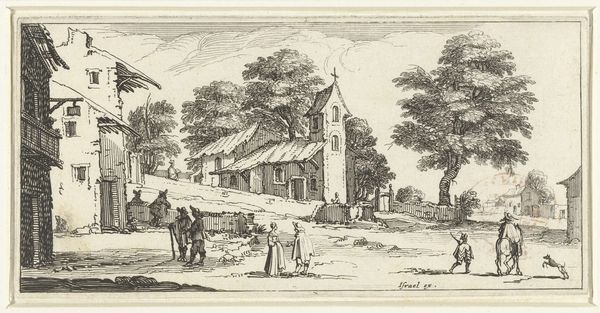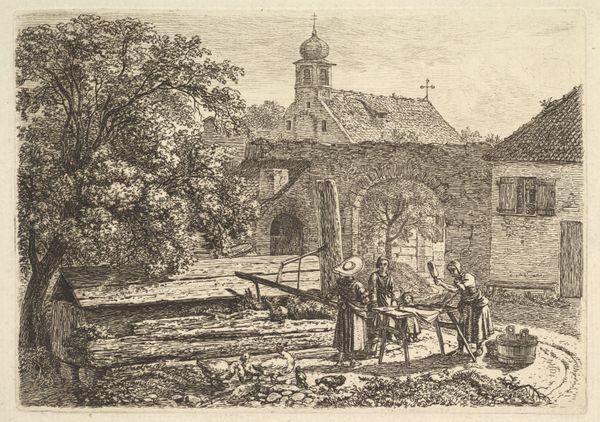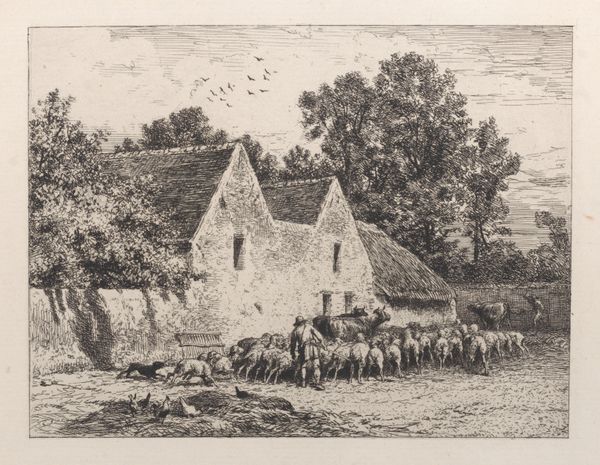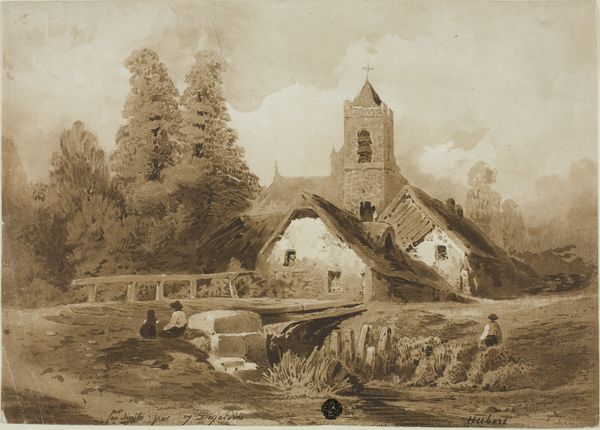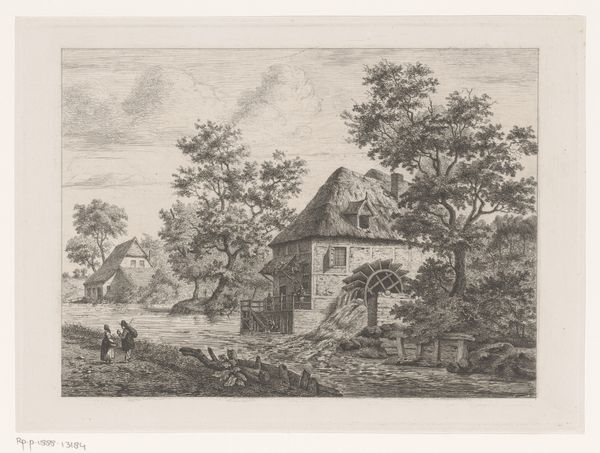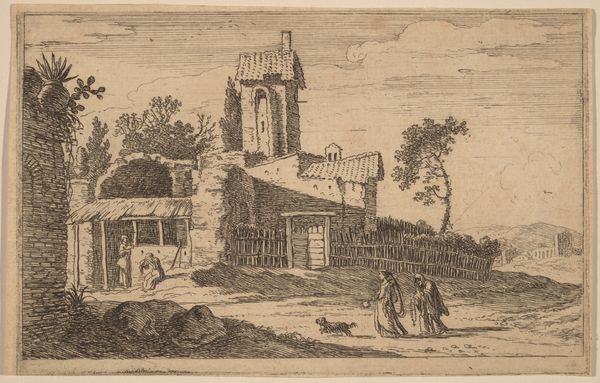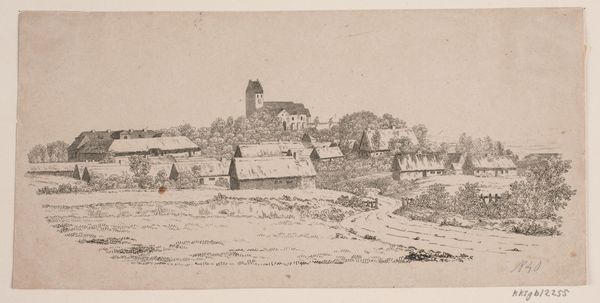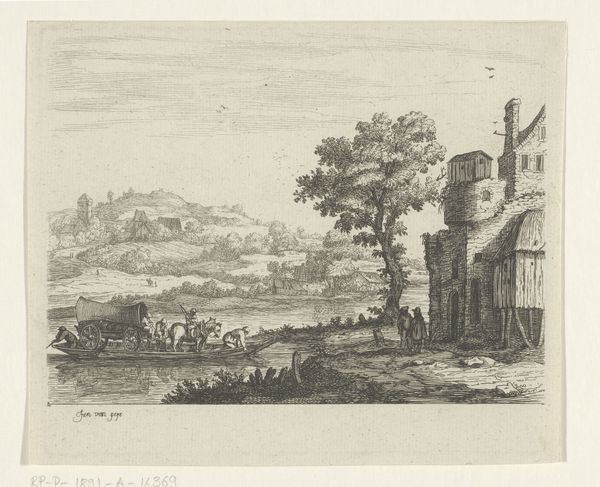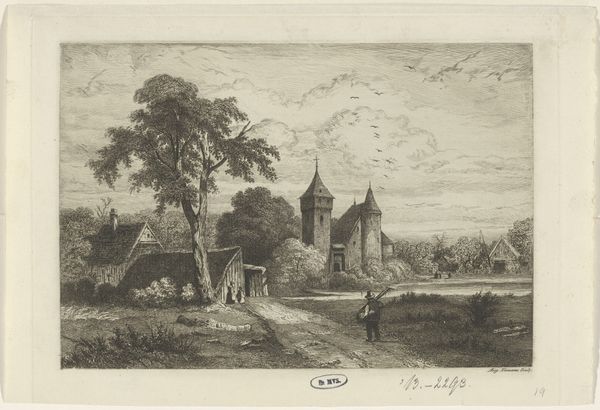
drawing, print, etching
#
drawing
# print
#
etching
#
landscape
#
etching
#
cityscape
Dimensions: Plate: 4 15/16 × 7 in. (12.5 × 17.8 cm) Sheet: 8 5/16 × 10 1/2 in. (21.1 × 26.7 cm)
Copyright: Public Domain
Curator: Look at this remarkable etching from 1817 by Johann Christoph Erhard, titled "The Town Wall of Regensberg." Editor: My first thought? It feels so incredibly...detailed. The intricacy of the lines describing the textures of the stone, the water, and foliage is almost overwhelming. It's hyper-realistic in its way. Curator: Absolutely, the details speak volumes. Erhard meticulously rendered not only the town's architecture but also the activities around it. Observe how he portrays this nexus for labour and trade. The ferry packed with people and livestock points towards flows of goods and labour across this waterway; we see the relationship between town, people, and landscape. Editor: The way he’s structured the scene contributes greatly. The dark boat in the foreground is weighed down which draws the viewer's eye immediately and horizontally, only to be interrupted vertically by the striking angles and lines of the buildings on the raised bank. Curator: And consider what an etching allows. Through lines, you can build up shadow and mass but also create pattern. The landscape almost feels textured in this print from what looks to be deliberate use of mark-making. What stories these marks tell! Who would have done this, how many prints, what were they used for, and why were they so valued? Editor: Yes, that play of light and shadow really does give it depth. And the way the architectural structures mirror each other on either side of the bank provides balance. Curator: Absolutely! A dialogue between humanity and nature unfolds before us—note the watermill to harness energy and move materials. This demonstrates how we utilize what we have for greater consumption and efficiency. The question is: at what price? Editor: The fact that it is an etching does say something about this era—about printmaking and its ability to distribute widely. If it had been oil or some other media, perhaps it wouldn’t reach a widespread audience—thus potentially diminishing its immediate social impact. Curator: It really forces you to think about that relationship and where value comes from. I found it rewarding. Editor: Indeed. The artist's choices reveal an intention that transcends mere representation, I think. I, too, leave here with a newfound interest and curiosity.
Comments
No comments
Be the first to comment and join the conversation on the ultimate creative platform.


